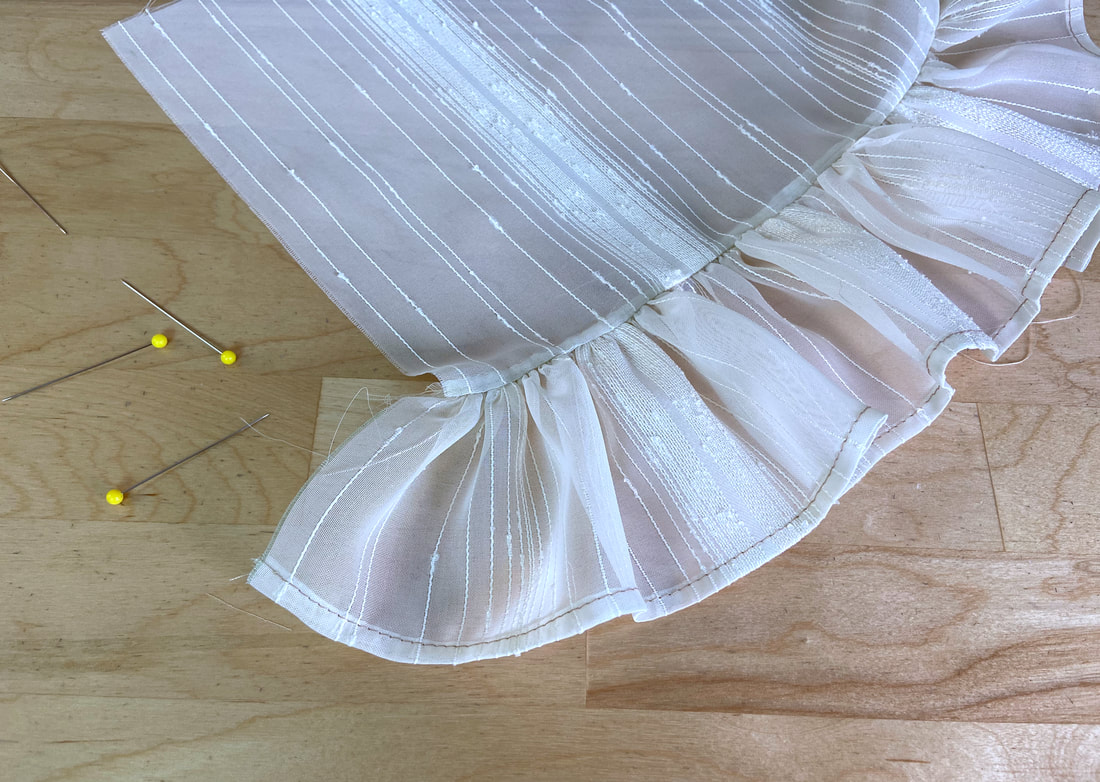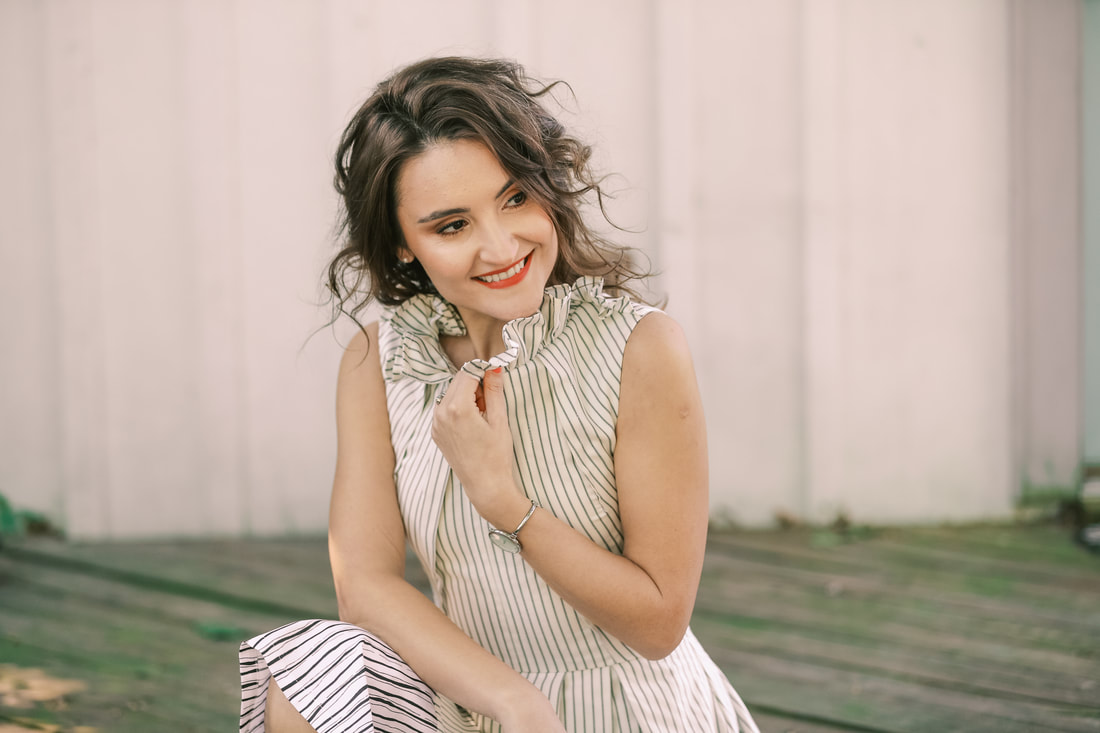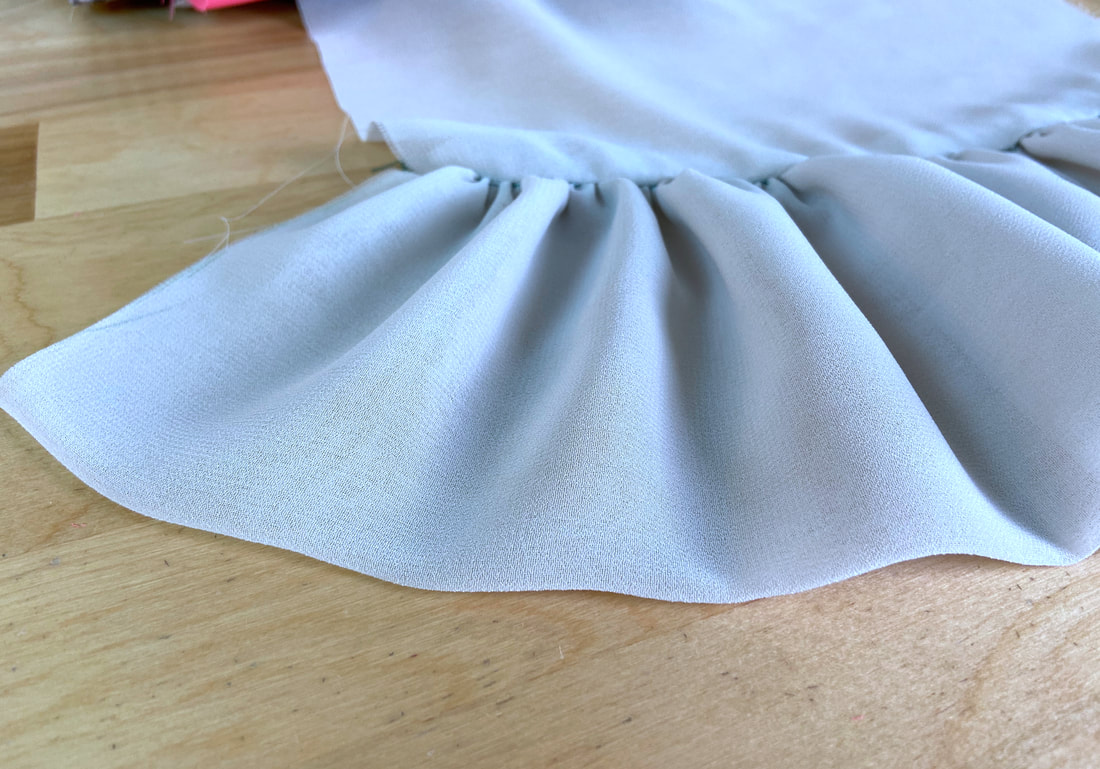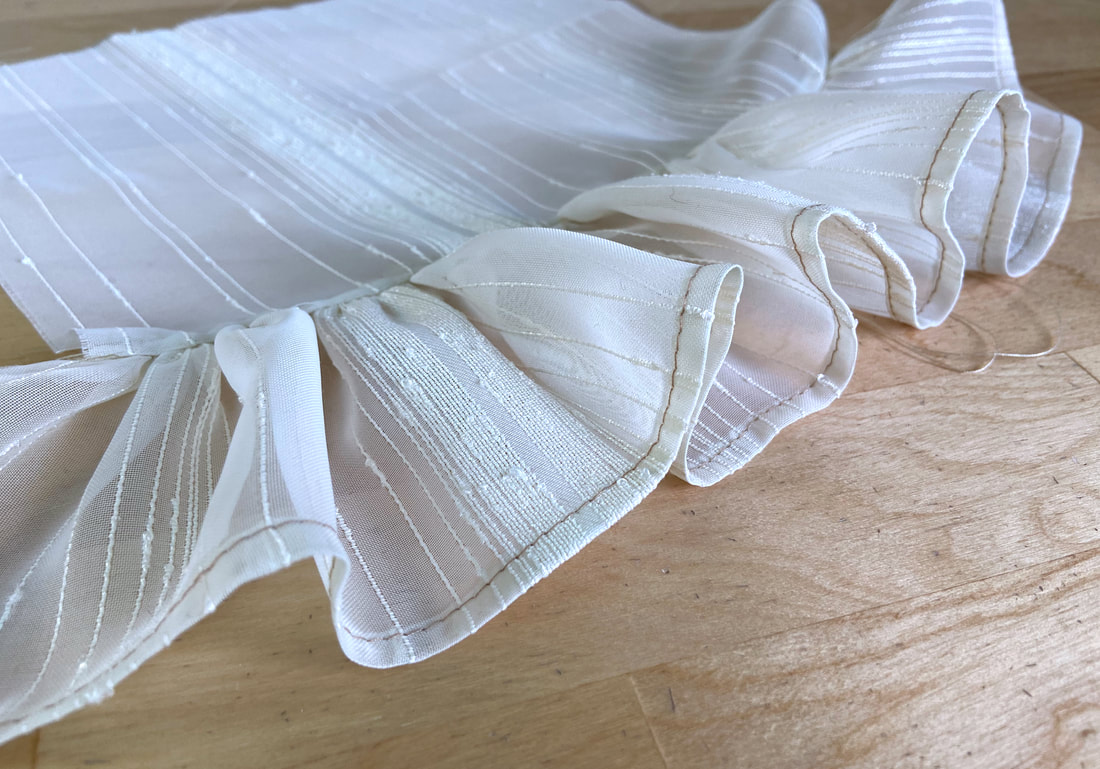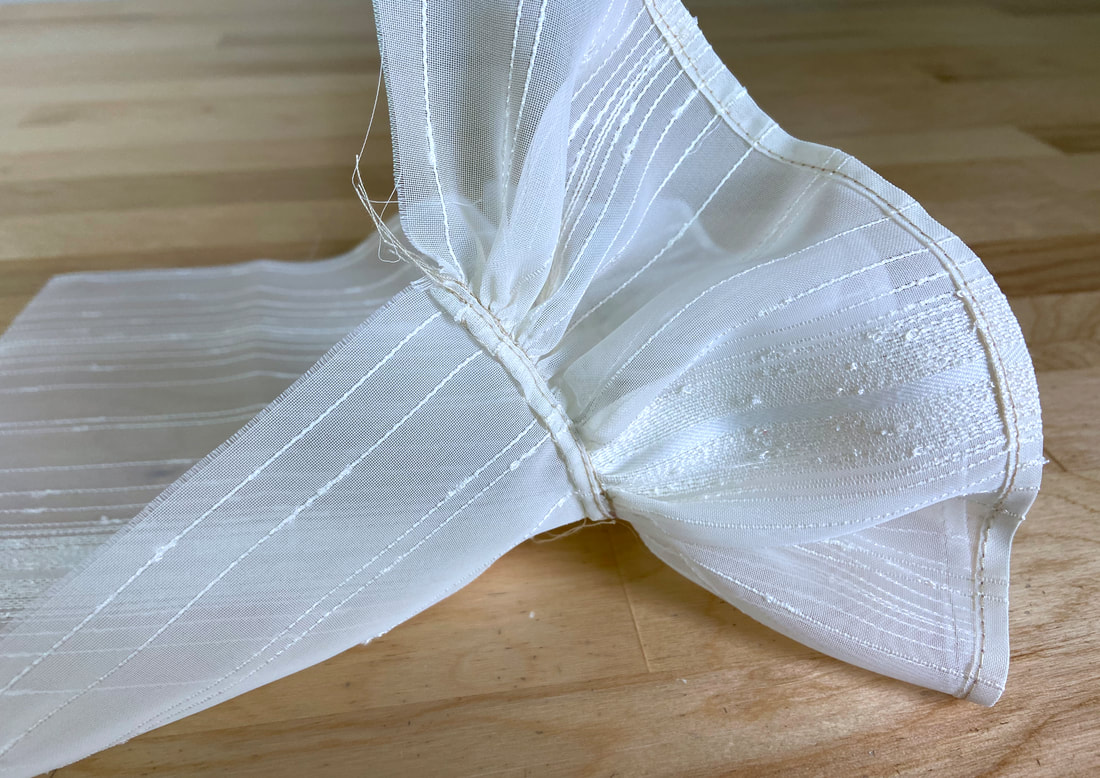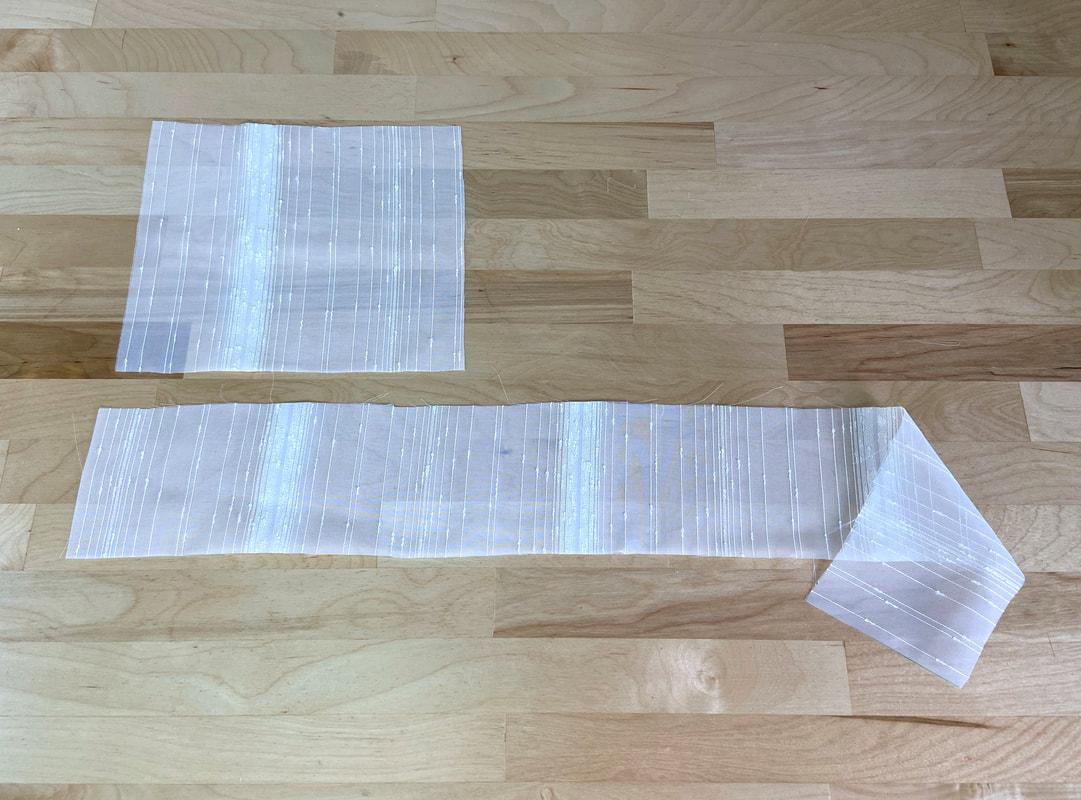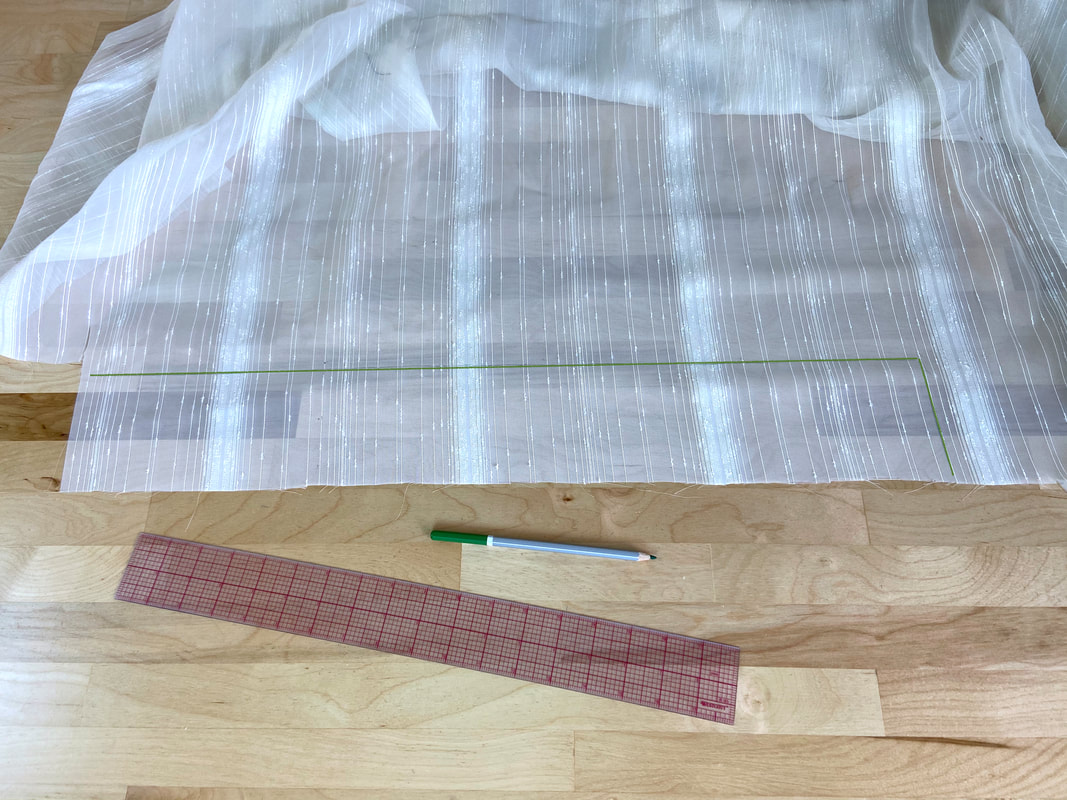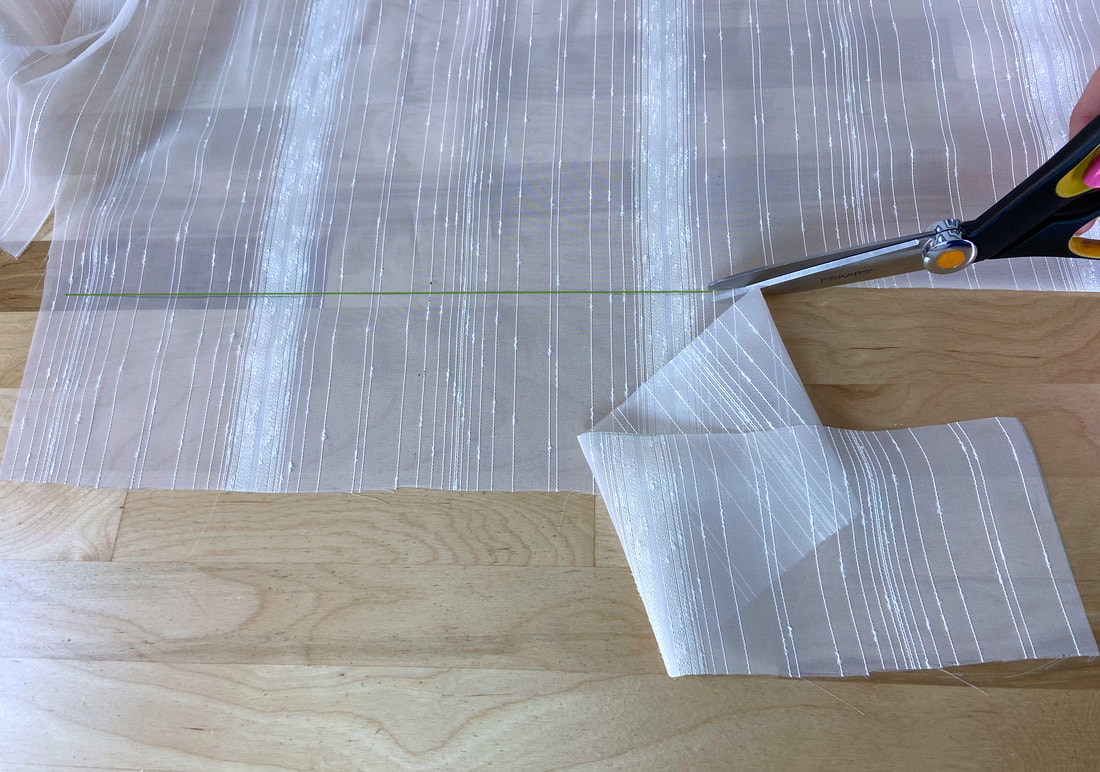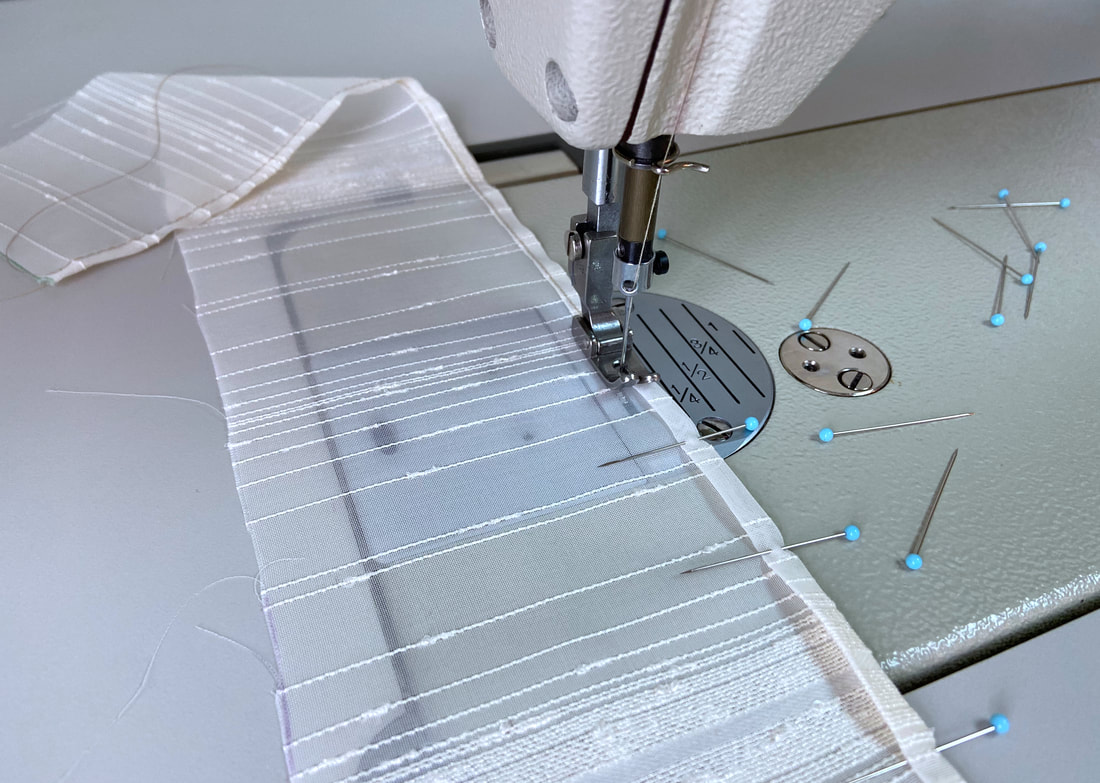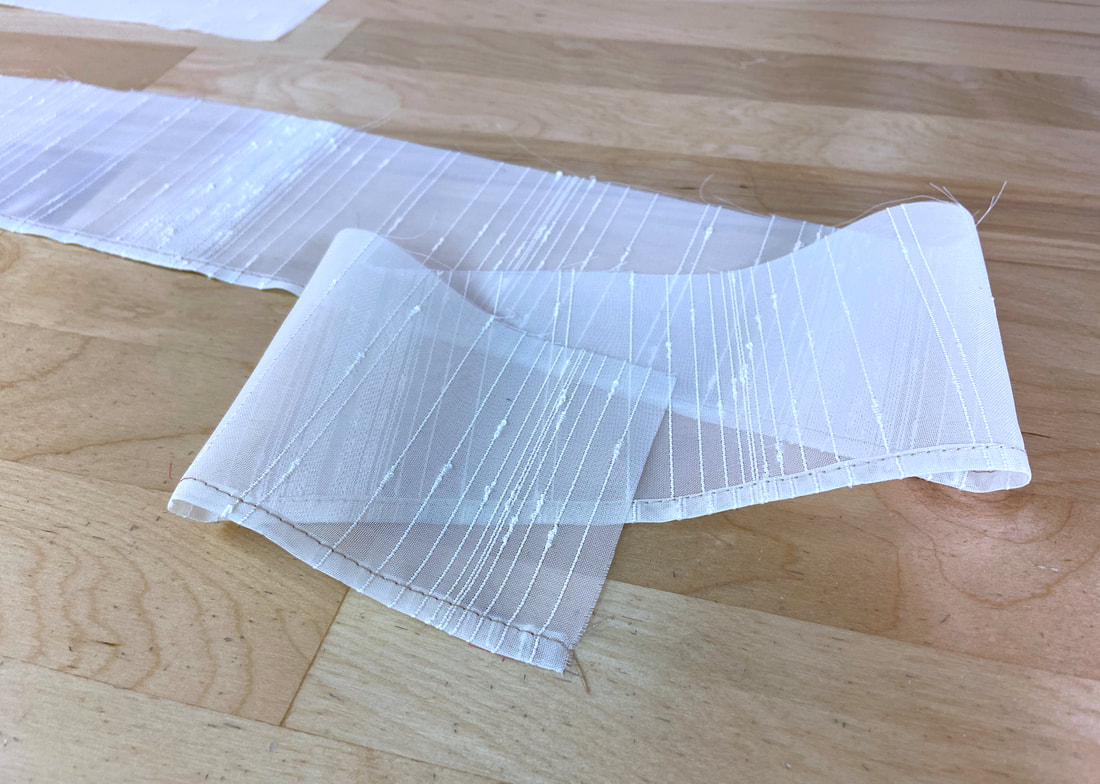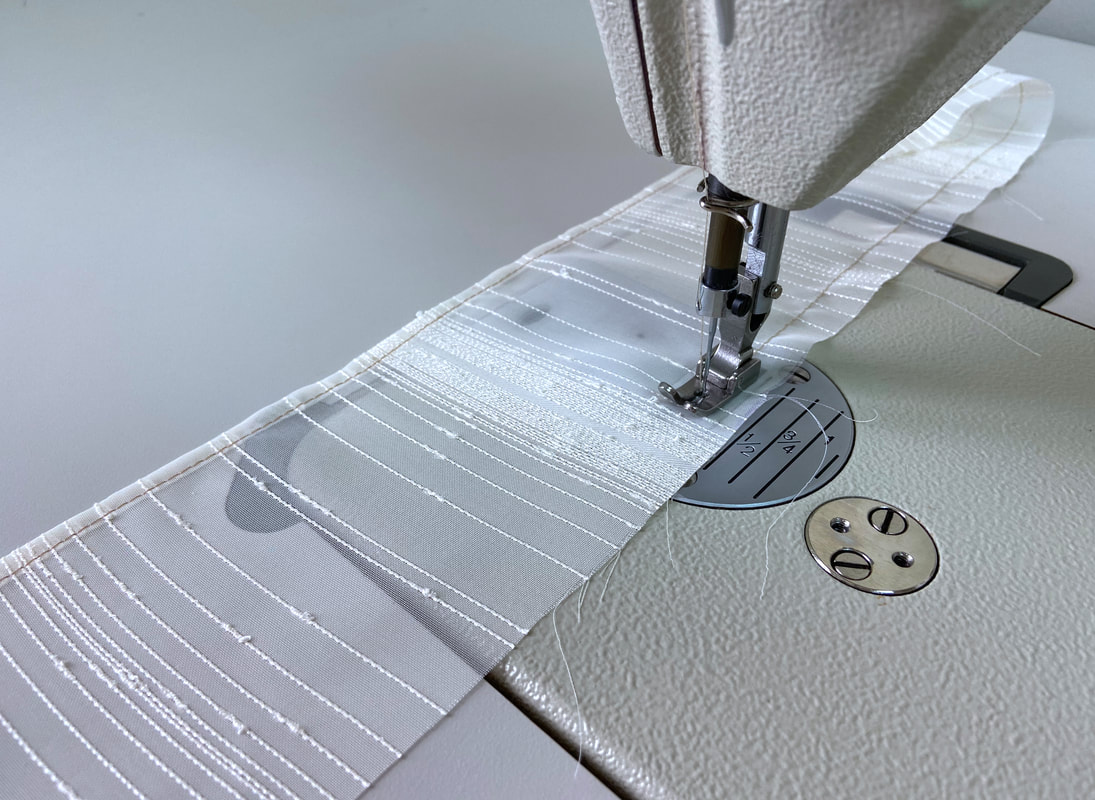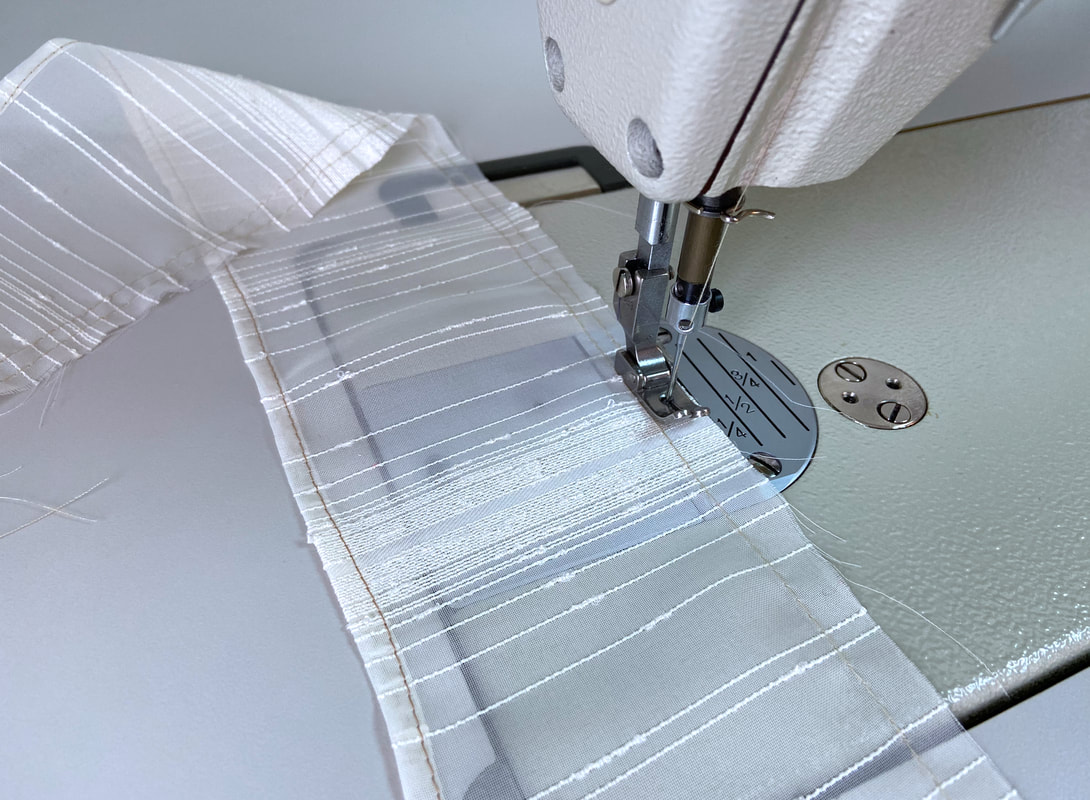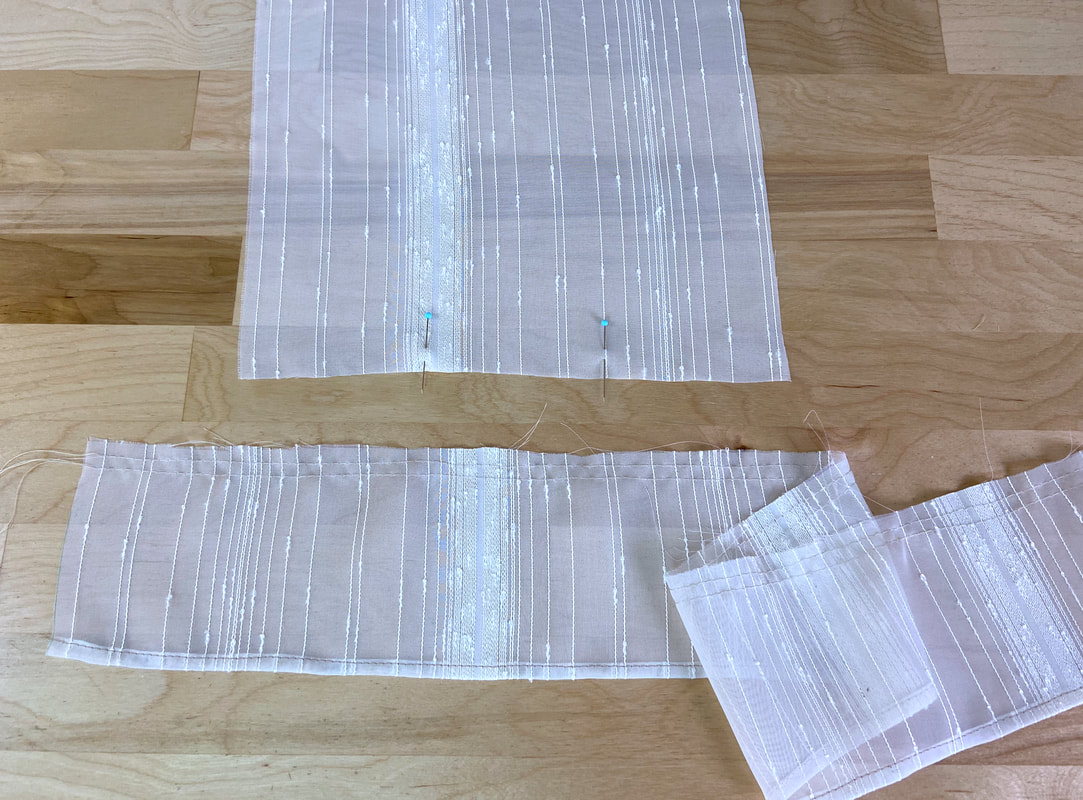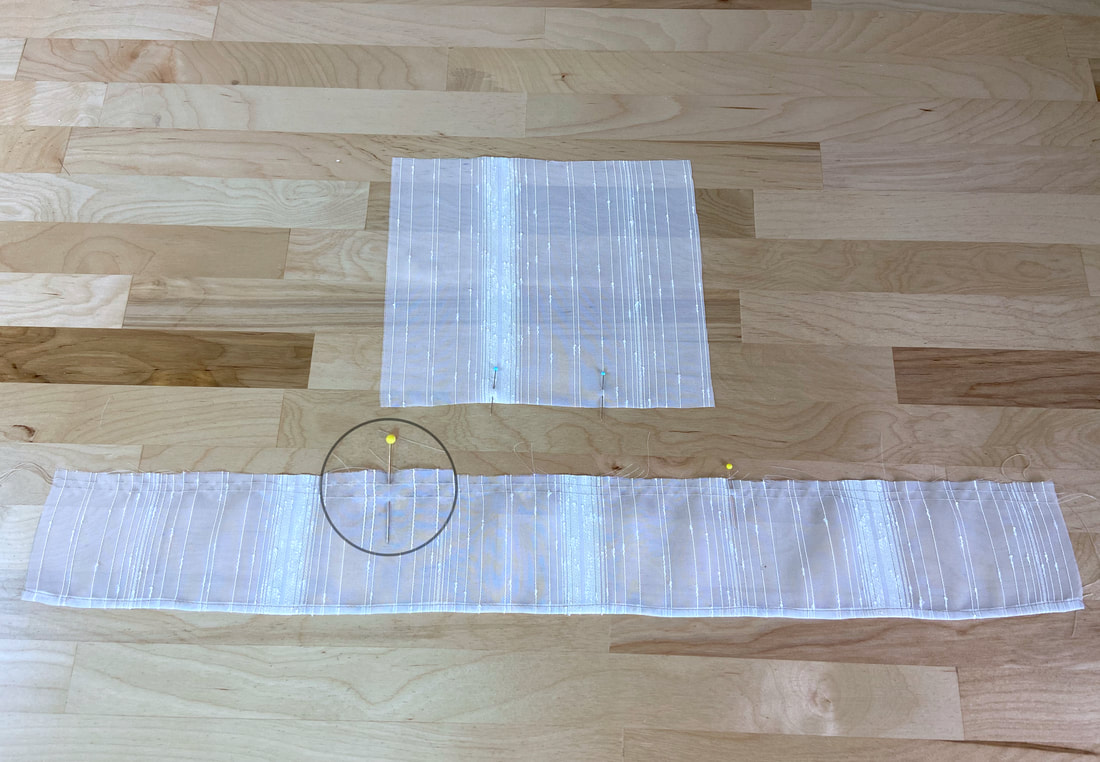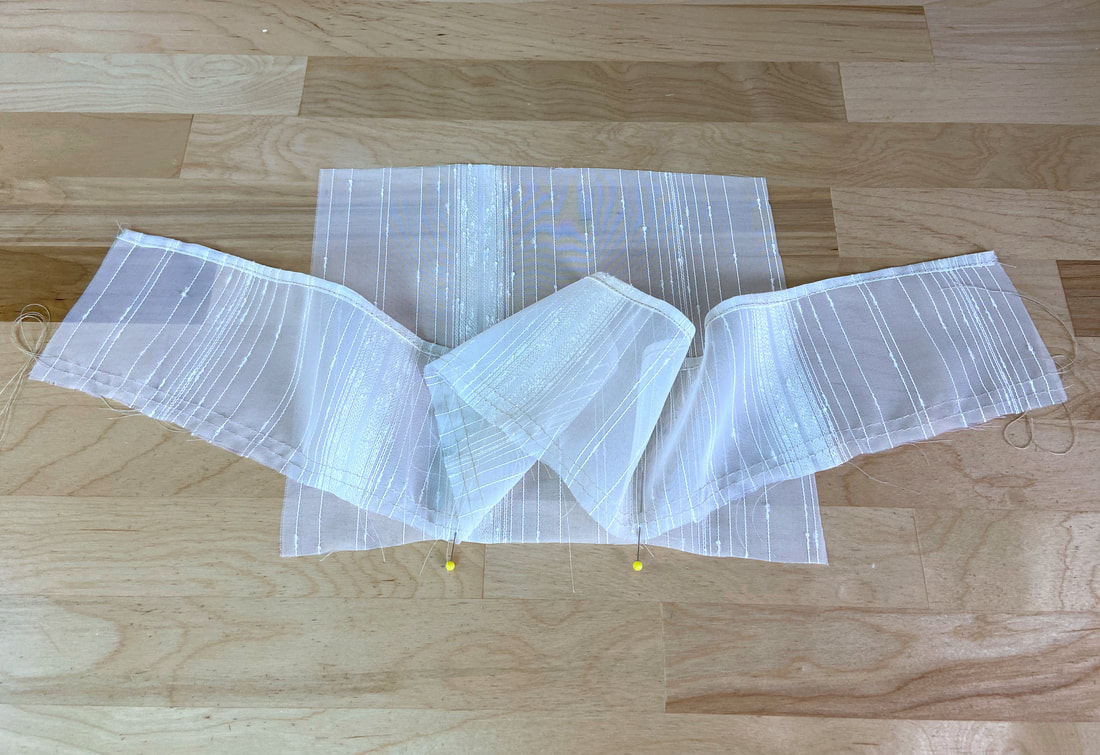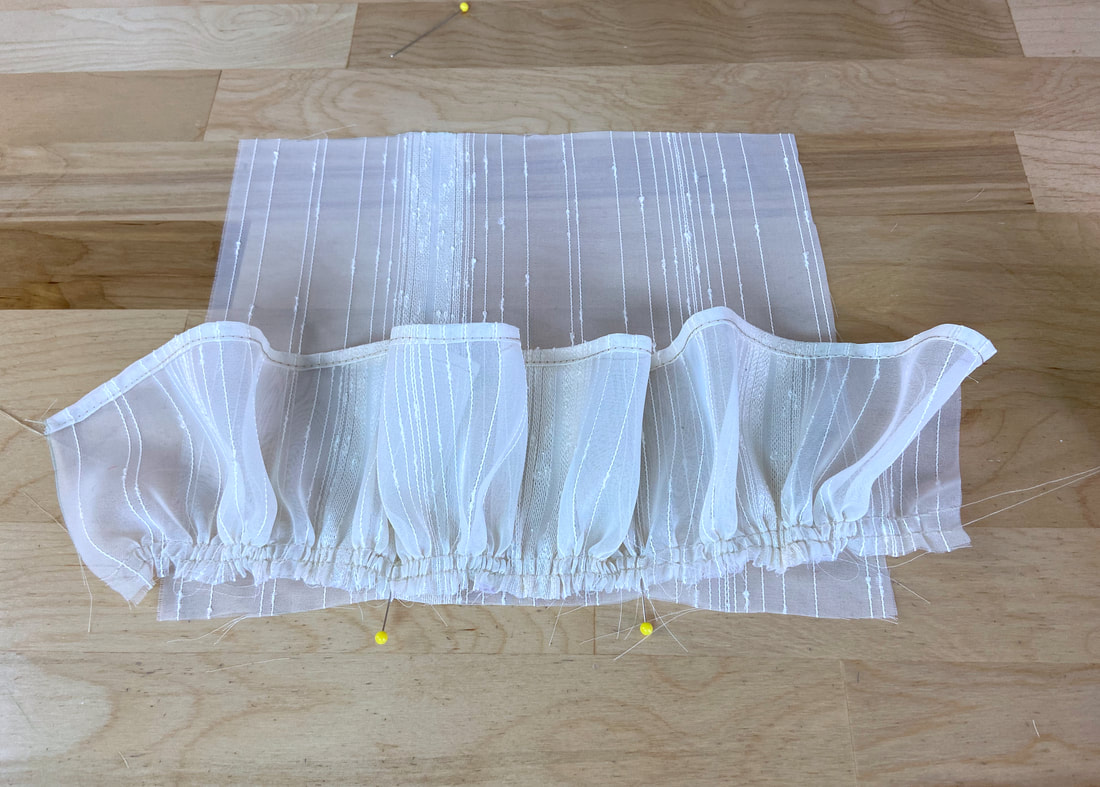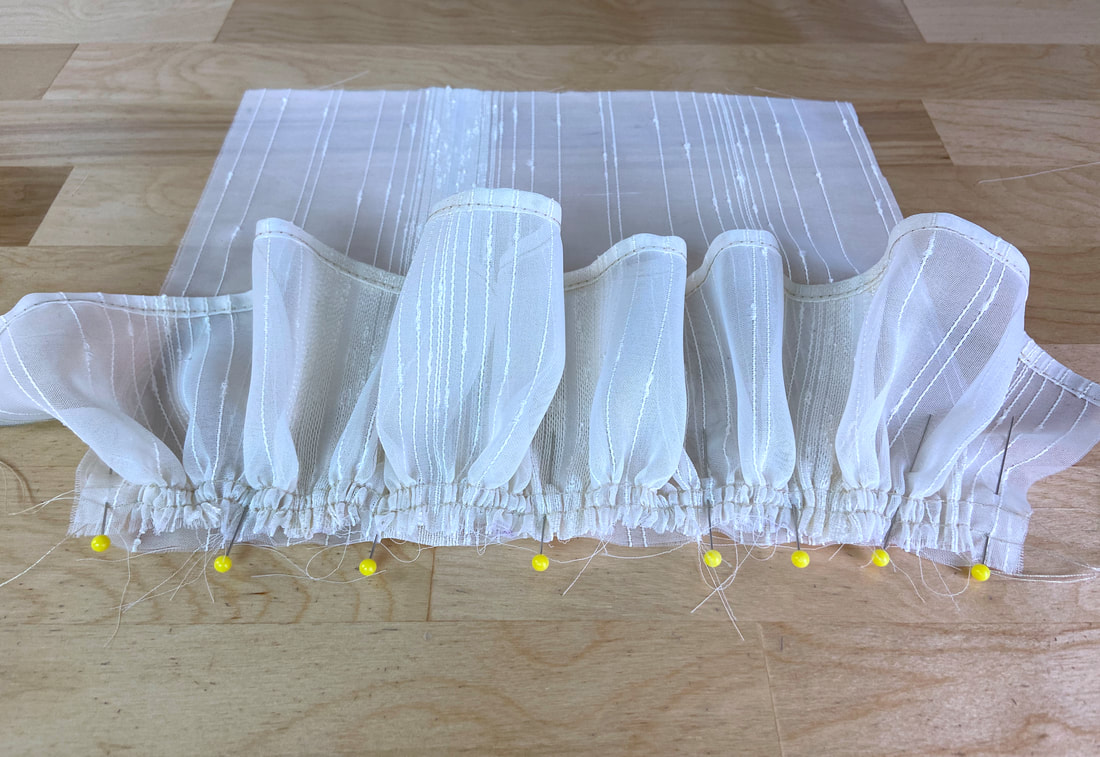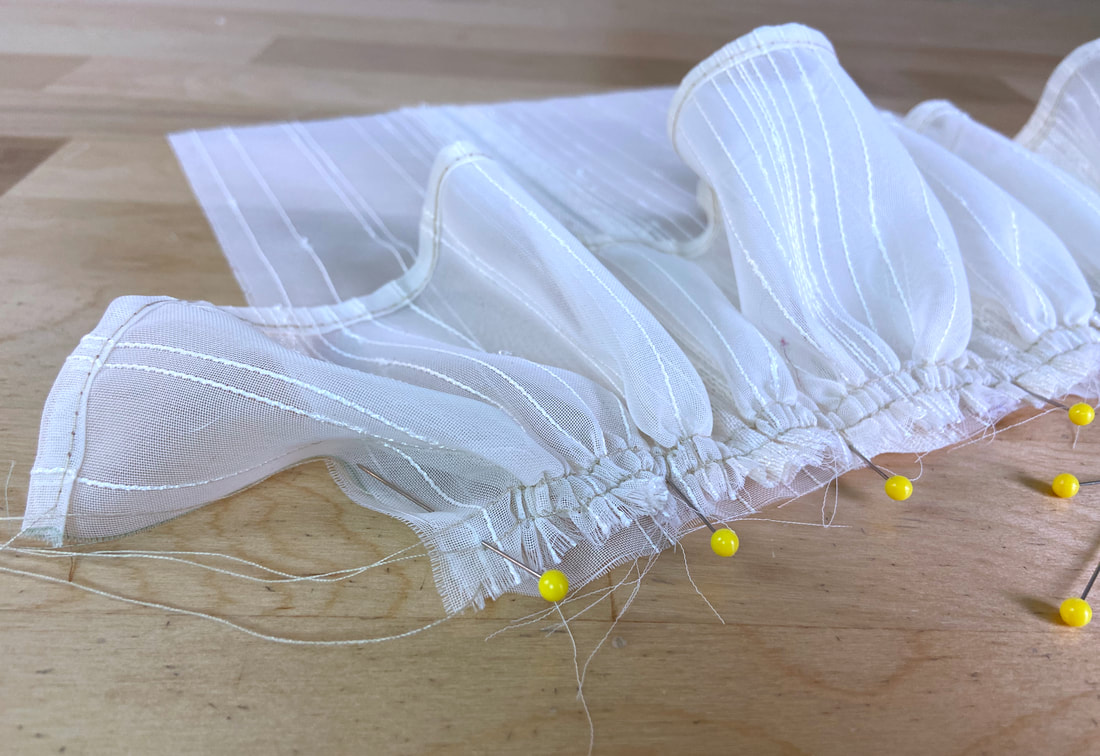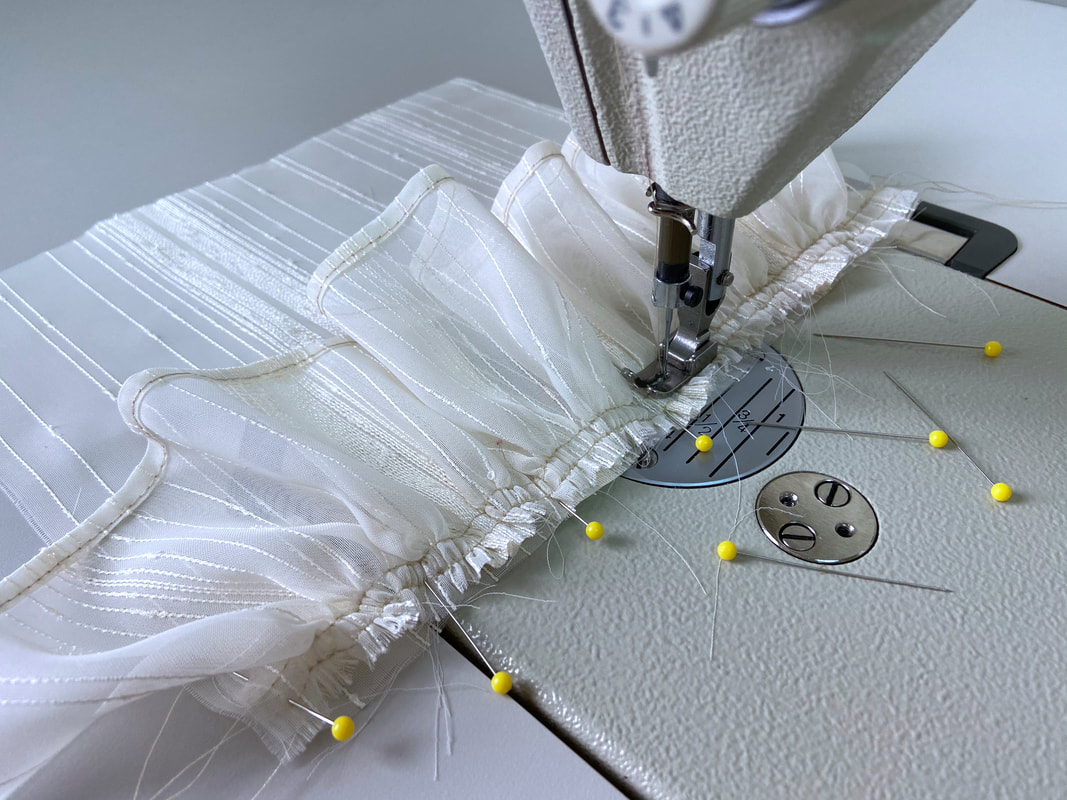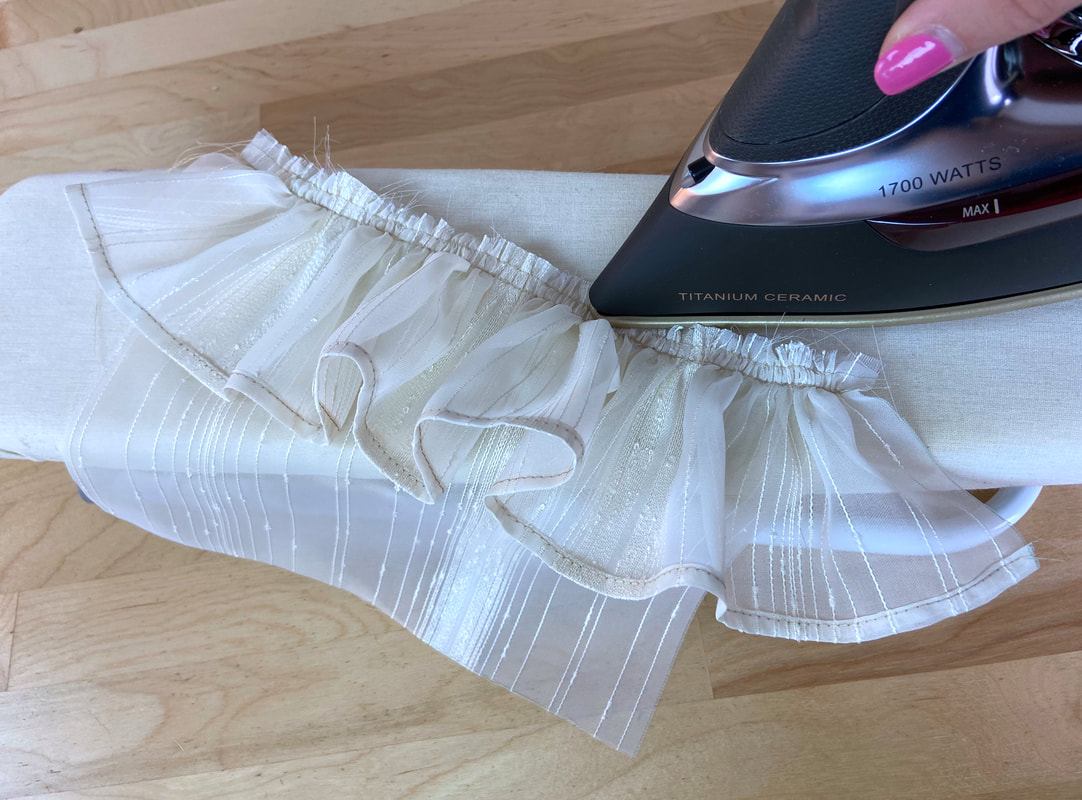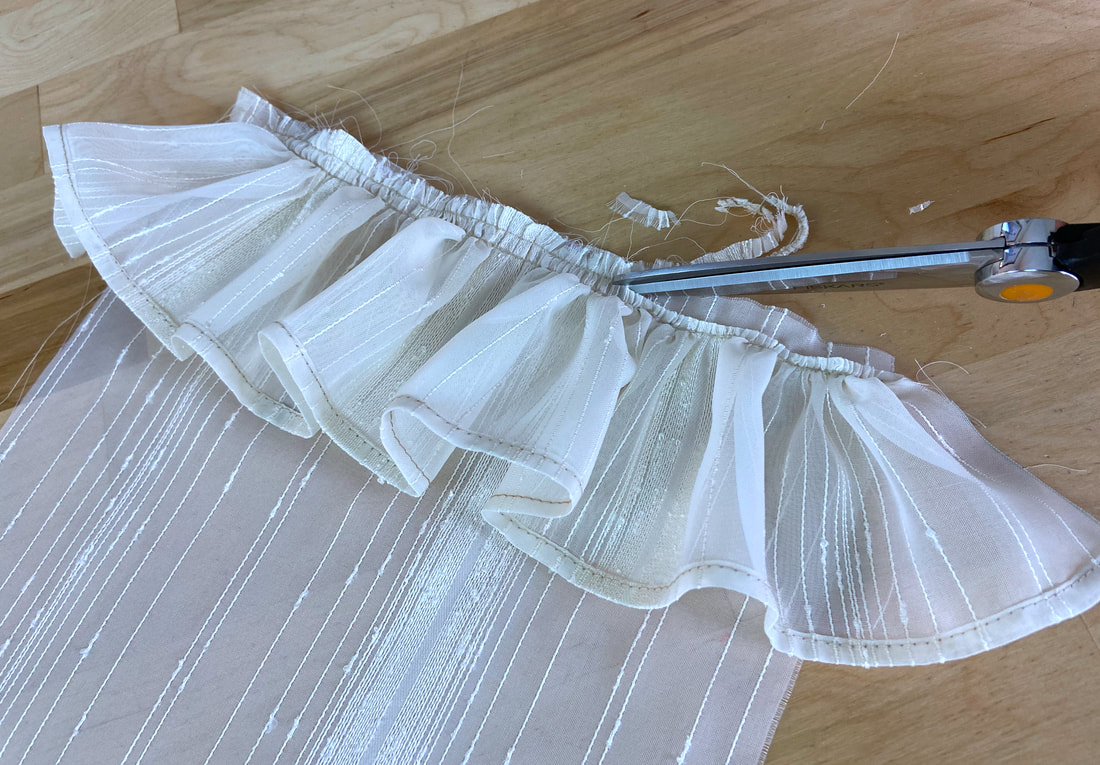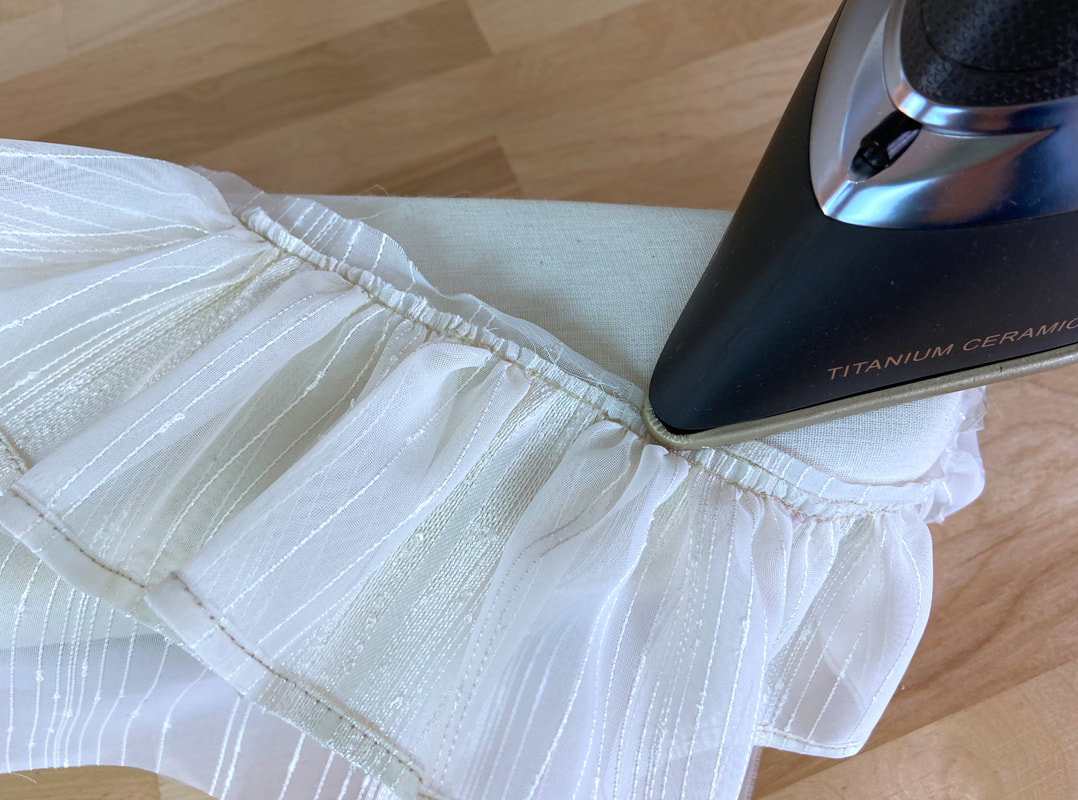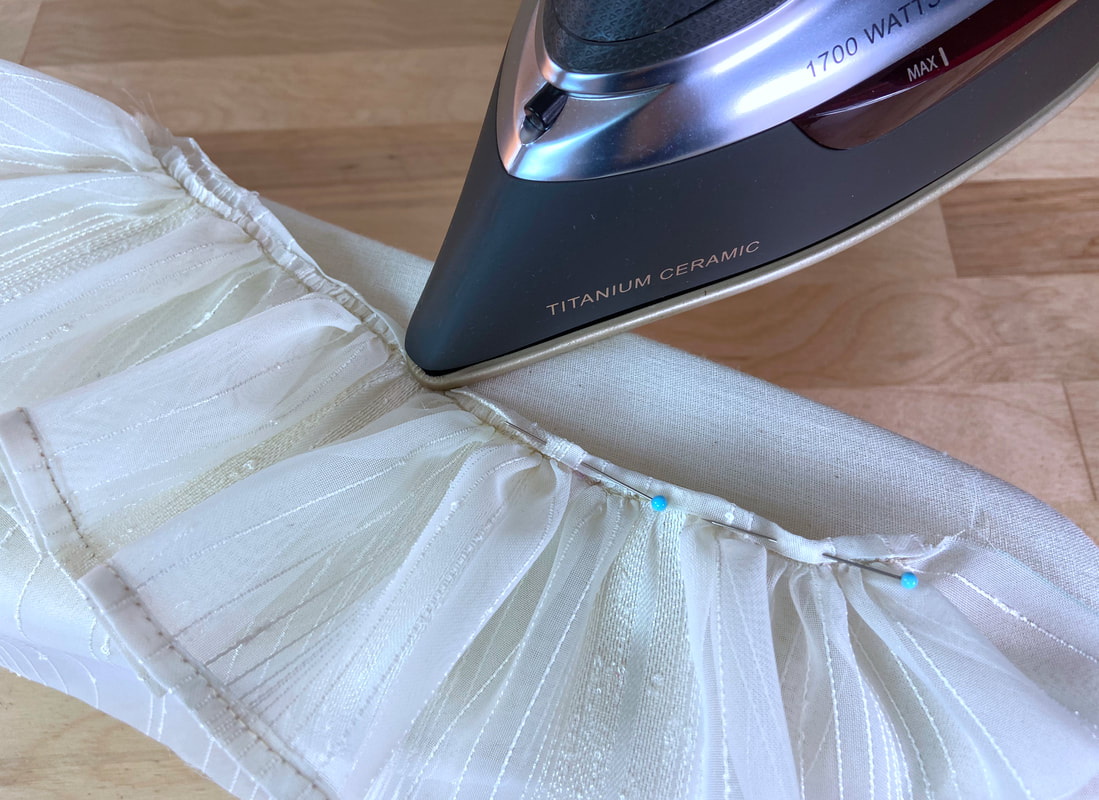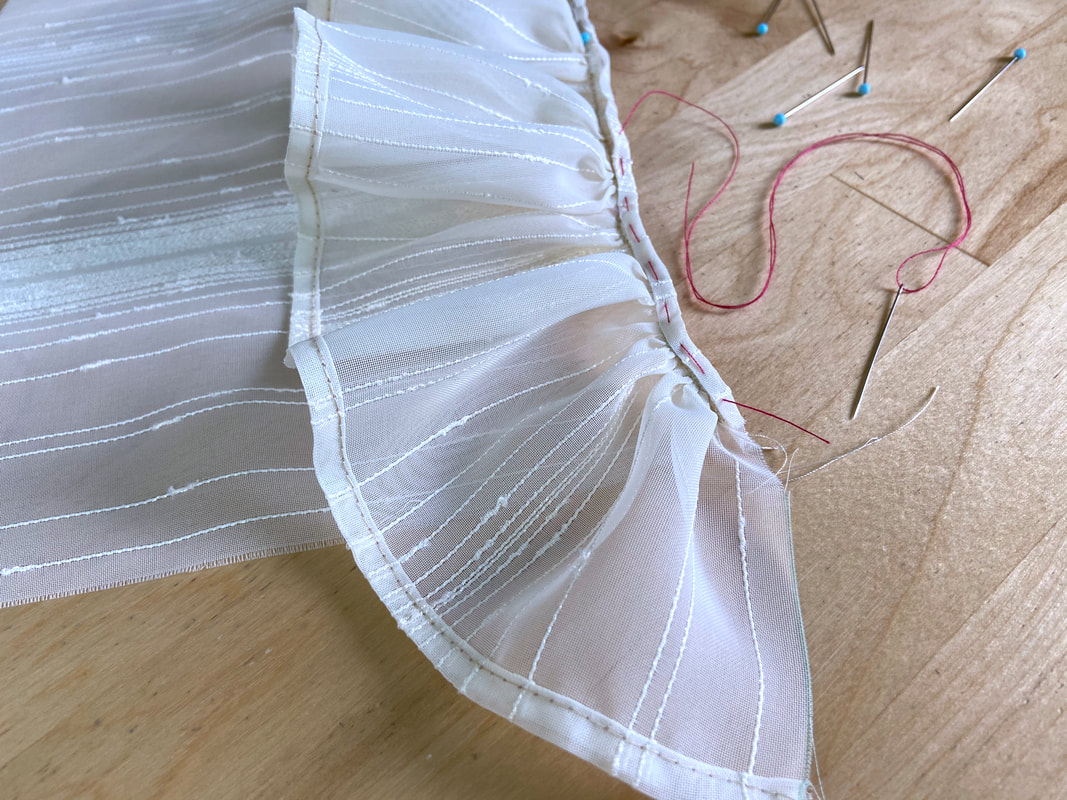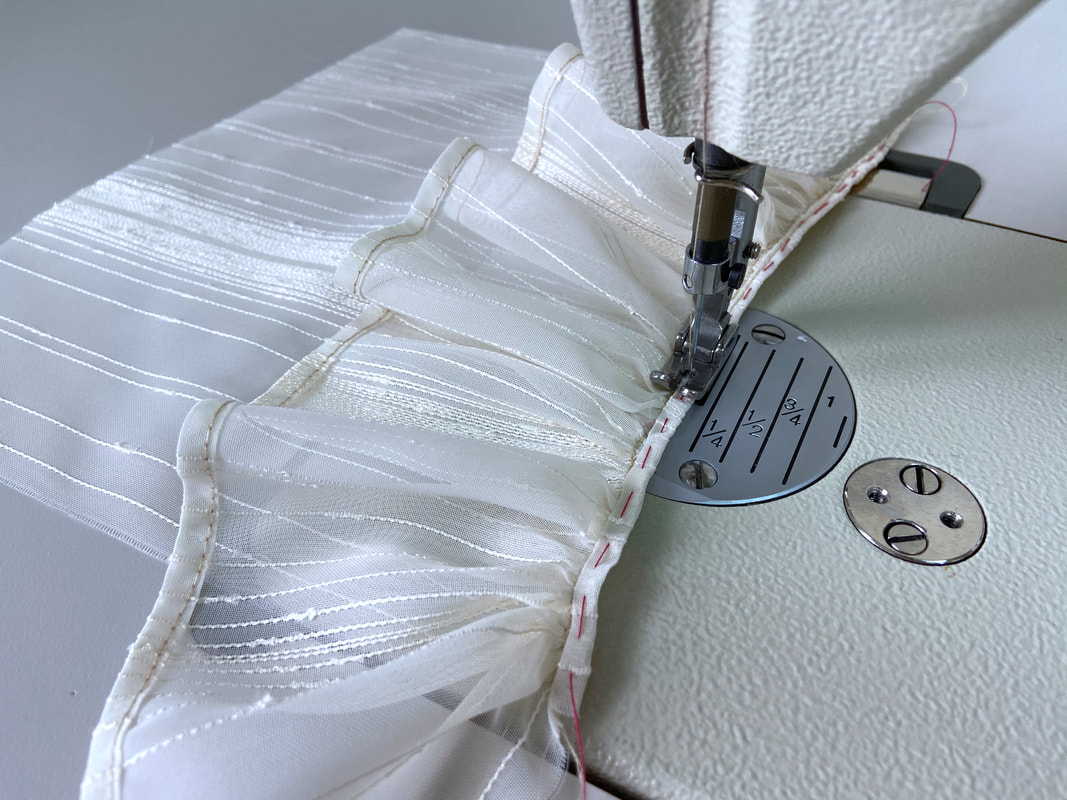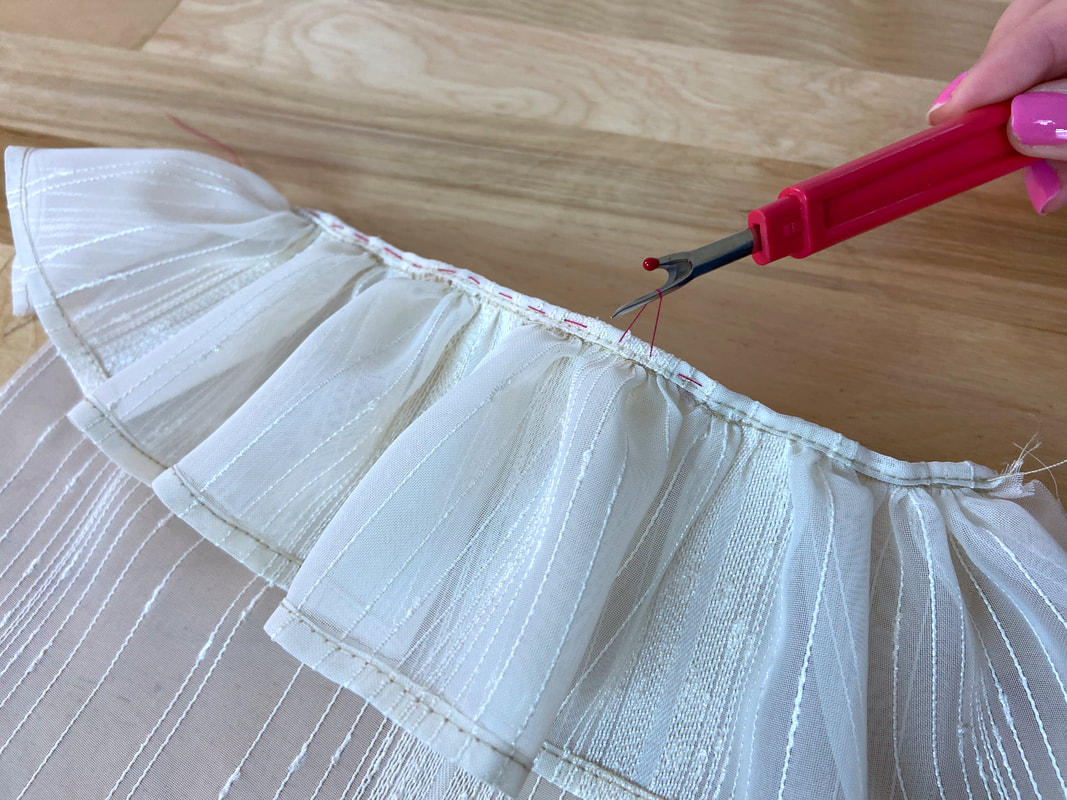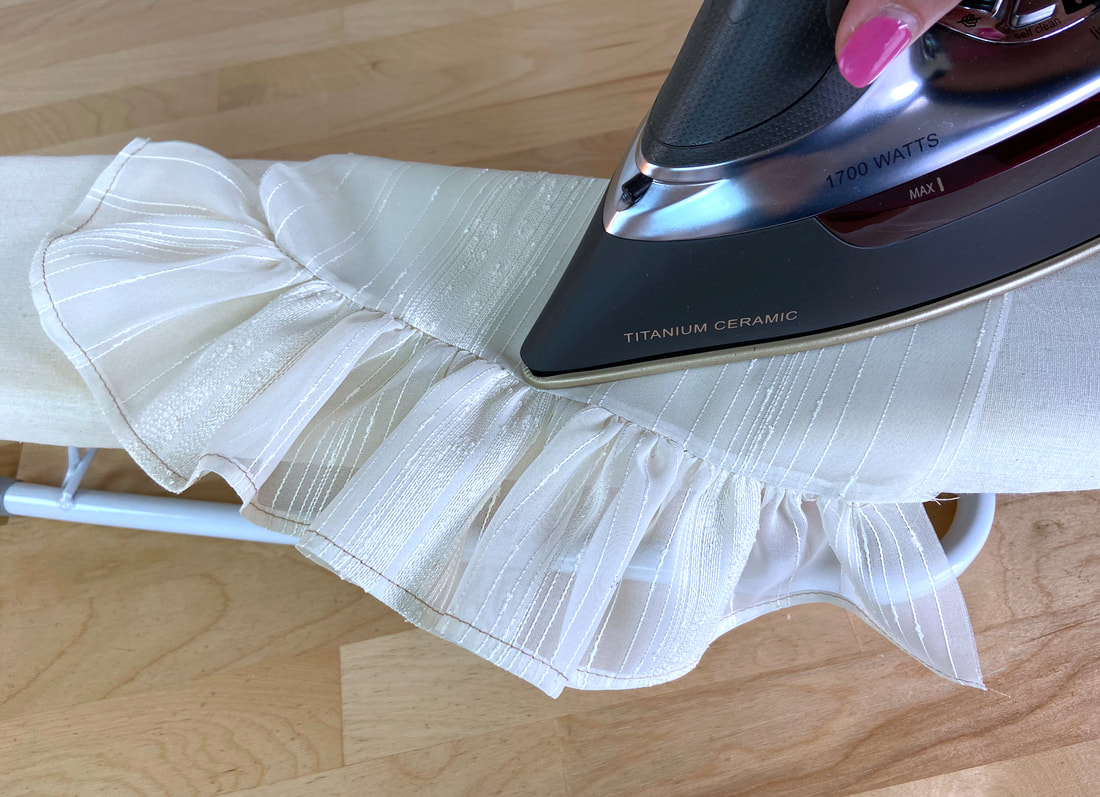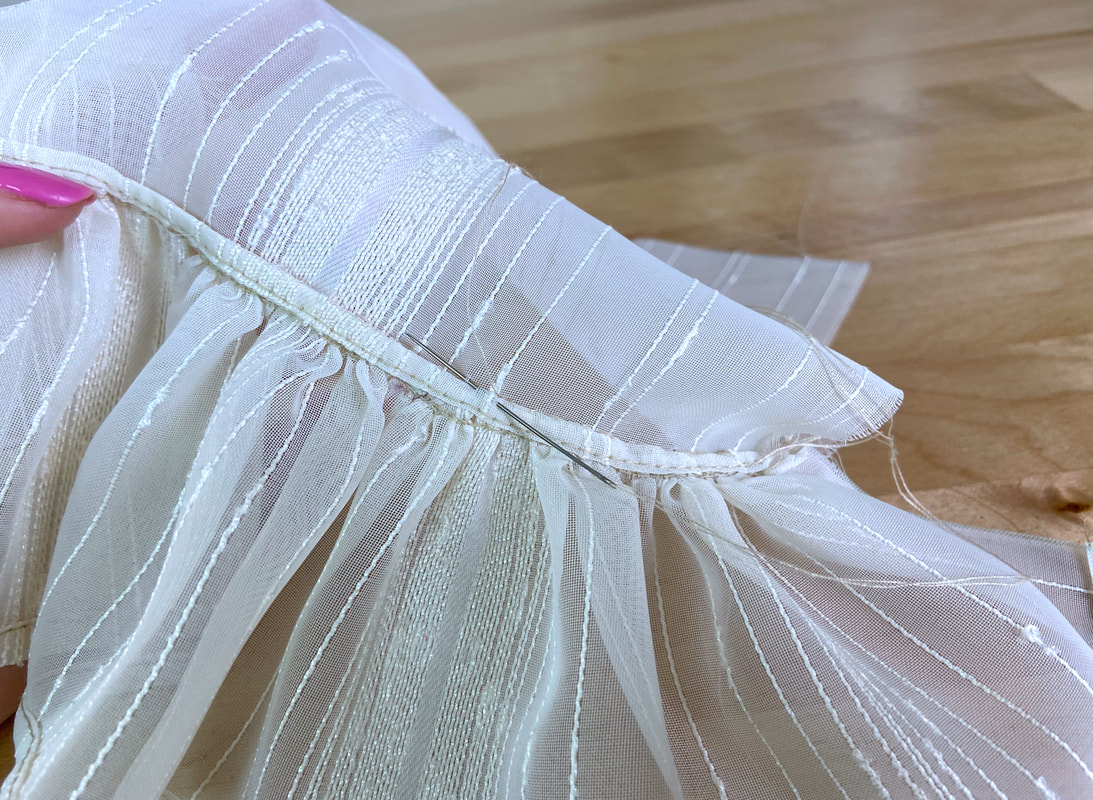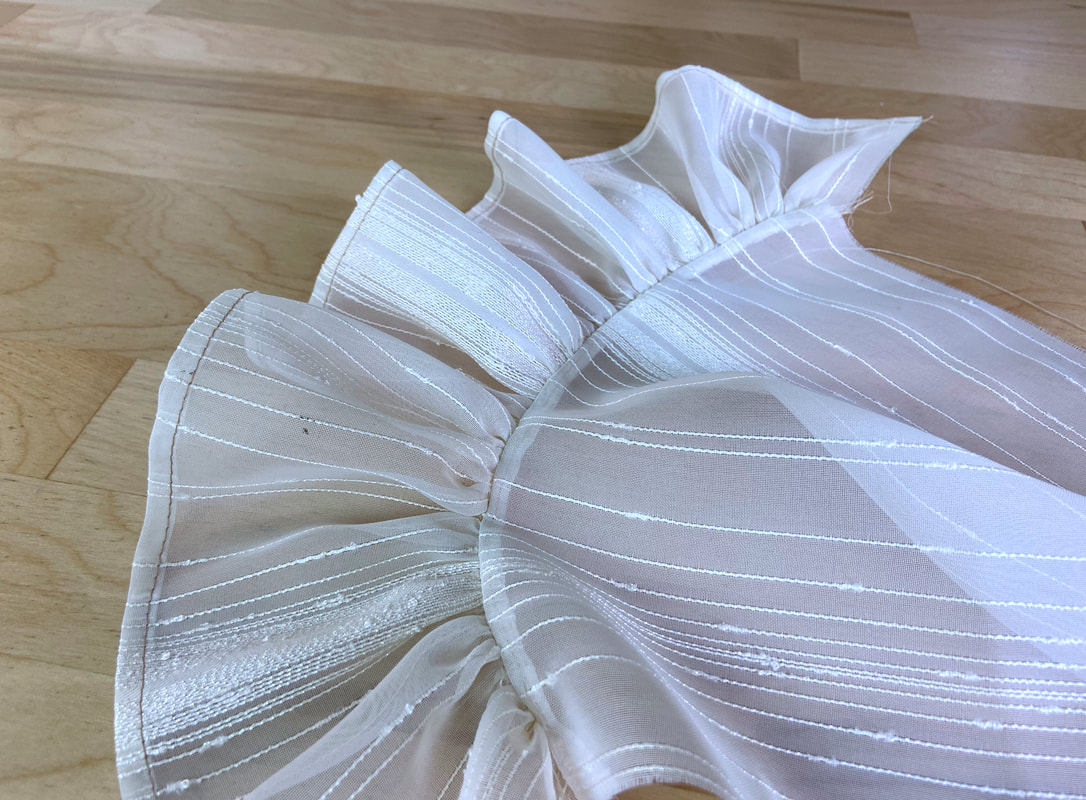What Are Gathered Ruffles?
Sewing a gathered ruffle to a garment’s edge requires some consideration when clean-finishing the seam allowance layers. A good quality ruffle application looks just as clean and professional on the wrong side as it does on its right side. This is especially true for ruffled edges that feature a slit opening or an underside that is visible from the face of the finished garment.
Gathered ruffles can be added to a garment’s hemline or along any of its opening edges. They are commonly used on dress, skirt or blouse hemlines, and along cuffs, collars, neckline and sleeveless edges.
The ruffle seam allowance can be fully enclosed with lining or clean-finished individually if the garment is unlined.
Both gathered and circle ruffles (which you can learn more about here: Sewing Ruffles: Overview ) can be sewn along curved, square or straight edges. In most cases, the shape of these edges determines how the seam allowance is ultimately finished.
Both gathered and circle ruffles (which you can learn more about here: Sewing Ruffles: Overview ) can be sewn along curved, square or straight edges. In most cases, the shape of these edges determines how the seam allowance is ultimately finished.
Straight edges are the easiest to stitch and clean-finish while curved and square ones work best when finished with a facing, bias strip or lining.
In this tutorial, you’ll learn a simple technique for sewing a gathered ruffle to a straight edge. The ruffle seam allowance is finished using only the seam allowance layers. No overedge stitching or additional elements like facings and bindings are needed.
The process of preparing the ruffle fabric strip is exactly the same as with any single layer gathered ruffle. The strip is cut at three (3) times the length of the finished ruffle plus two (2) seam allowances.
In terms of width, the choice is up to you but whichever [width] you choose, add two seam allowances to account for finishing both lengthwise edges. In this case, one of the ruffle’s lengthwise edges is sewn to the garment’s edge, while the other is free-hanging and thus clean-finished individually.
How To Stitch A Gathered Ruffle To A Garment’s Edge
1. Measure and draw the rectangular ruffle strip on the fabric’s crosswise grain as shown. In this example, the fabric strip is 31” long and 4” wide. Both the width and length measurements account for two ½” seam allowances (1” total for both length and width).
2. Carefully cut the fabric strip along the marked lines.
3. Clean-finish the ruffle’s bottom, free hanging edge. You can use a rolled hem or a simple double fold-and-topstitched technique. A folded topstitched finish is used in this example. The edge is folded once at ¼”, ironed, then folded again at ¼” and topstitched.
4. Next, add a longer straight stitch (machine basting) along the unfinished ruffle edge at a hair above the seamline as shown.
5. Add a second stitch parallel to the first at approximately ¼” within the ruffle’s seam allowance.
6. Divide the garment edge in equal parts at 4”-6” apart. Insert a pin at each location.
7. Next, divide the ruffle’s double-stitched edge into the same amount of equal parts as the garment edge (shown above). This time, the length of each portion will be about three (3) times longer than each corresponding portion along the garment’s edge. Insert a pin to mark each location.
8. Align the edge of the garment to the double-stitched ruffle edge such that the fabric face sides are touching and all corresponding pins align. Pin the two layers together at each corresponding location. The ruffle portions will naturally be longer than those on the garment’s edge and drape down evenly between each point.
9. To gather, gently pull the loose threads at each end of the ruffle until the ruffle’s edge matches the length of the garment edge underneath.
10. Distribute the gathers evenly and insert pins perpendicularly to securely hold the two edges together.
Keep in mind that the straight edge underneath the gathers should remain smooth and flat throughout the application process.
11. With the gathers facing up, stitch right below (or directly on top of) the bottom gathering stitch as shown.
12. Once stitched, iron the seam allowance (only) flat. Do not iron directly on top of the ruffle folds.
13. Next, trim only the ruffle’s seam allowance layer down to ¼” or less.
14. Fold the untrimmed edge of the garment’s seam allowance once, and iron the fold to keep it creased.
15. Fold again over the ruffle seam allowance to enclose all raw edges as shown. Carefully iron this second fold and insert a few pins to secure.
16. Hand baste the folded seam allowance layers for added stability during the machine stitching process to follow.
17. Machine stitch through all seam allowance layers next to the bottom folded edge as shown. Once stitched, remove the hand basting using a seam ripper.
18. Last but not least, iron the finished seam allowance layers up. This will naturally direct the ruffle down, aligning it along the garment’s edge as needed.
19. If you find that the folded seam allowance does not stay in place, slipstitch it to the garment layer as shown.
The slipstitch will ensure the ruffle is aligned properly and always hanging down. You can learn more about slipstitching, and other blind-stitching techniques in this tutorial: Hand-Applied Blind Stitches
Note: If you are looking for a fast finish, you can simply trim the seam allowance down to minimize bulk, and enclose its raw edges with an overedge stitch. For best results, use a dense zigzag or serging stitch.

